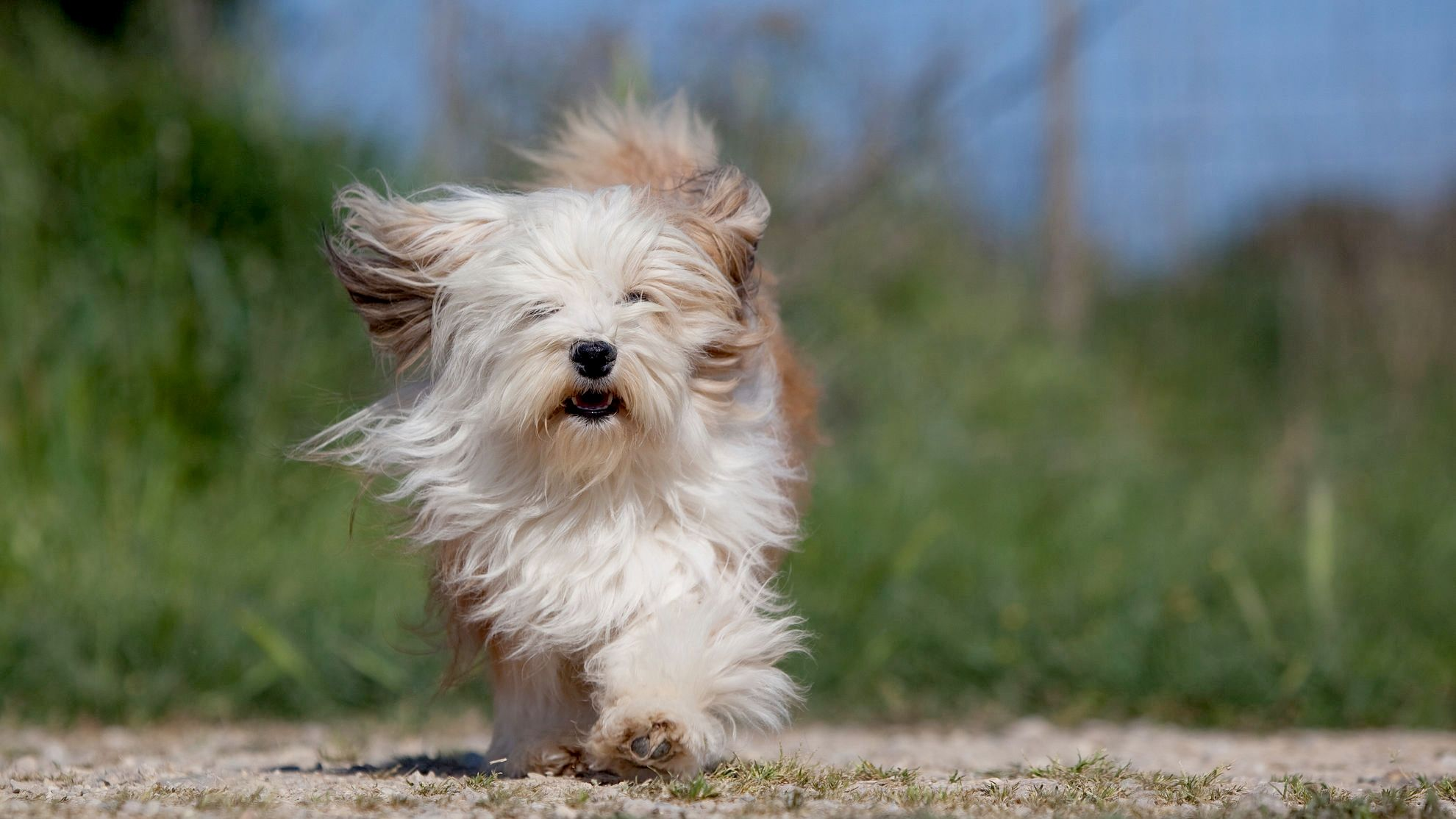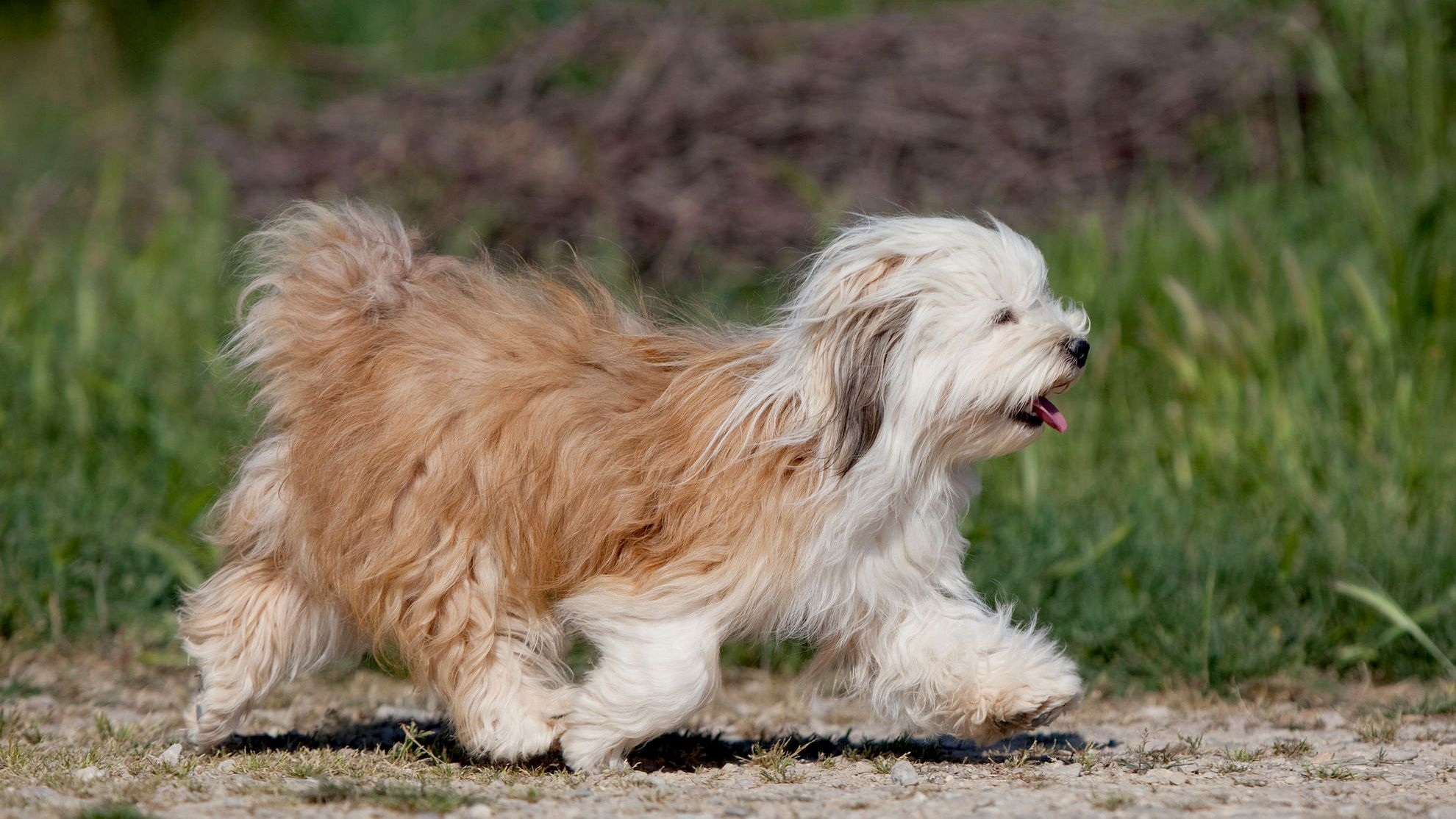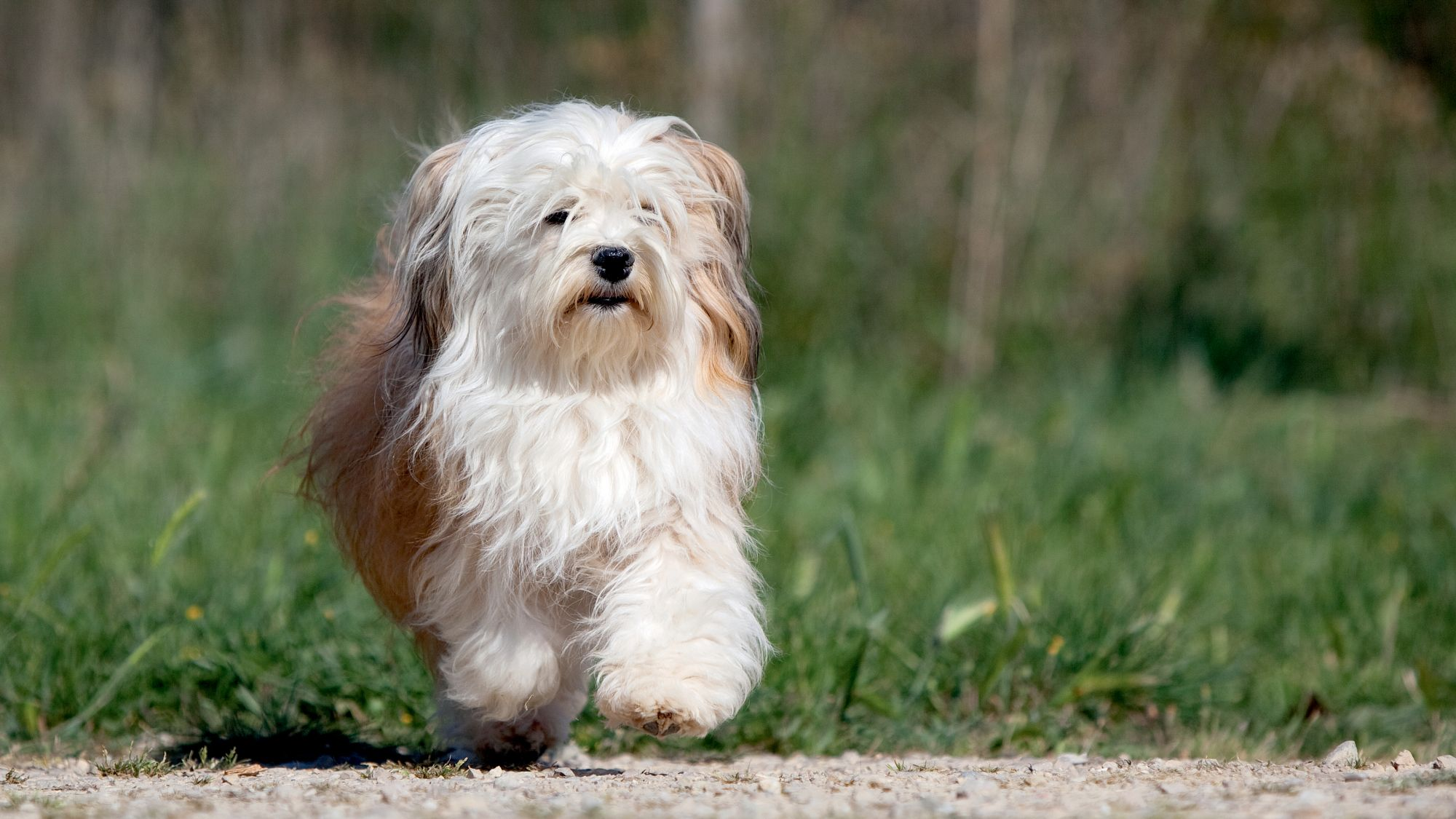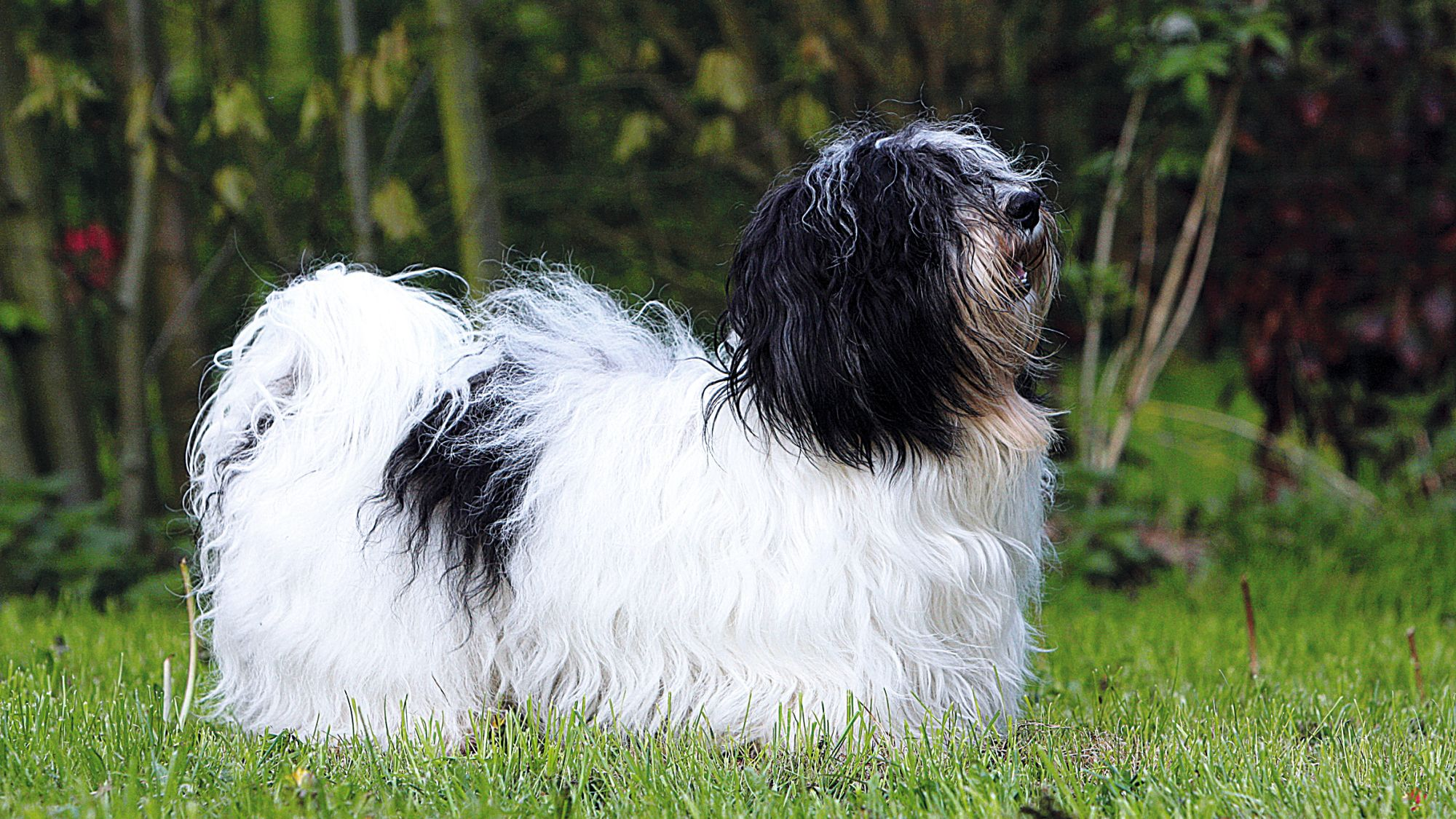
Let's talk Havaneses
Cuba’s most charming export, the Havanese, has become one of the world’s most beloved breeds. Small, mild-mannered, and affable with nearly everyone they meet, their bright manner and willing nature make them an outstanding housepet. Havanese are very easy to train and exercise needs - given that they are a toy breed - are fairly minimal, with a jaunt or two around the block being quite sufficient.Official name: Havanese
Other names: Havanese Cuban Bichon, Havaneser, Havanezer, Bichon Habanero, Rigno, Havana Spaniel, Havana Silk Dog
Origins: Cuba

| Drooling tendencies |
|
Warm weather? |  |
| Shedding level |  |
Suited to apartment living? | |
| Energy Level (high, low, medium)* | High | Family Pet?* |
|
| Compatibility with other pets |  |
Can stay alone?* |
* We advise against leaving pets alone for long stretches. Companionship can prevent emotional distress and destructive behaviour. Speak to your veterinarian for recommendations.
Every pet is different, even within a breed; this snapshot of this breed specifics should be taken as an indication.
For a happy healthy and well-behaved pet, we recommend educating and socializing your pet as well as covering their basic welfare needs (and their social and behavioral needs).
Pets should never be left unsupervised with a child.
Contact your breeder or veterinarian for further advice.
All domestic pets are sociable and prefer company. However, they can be taught to cope with solitude from an early age. Seek the advice of your veterinarian or trainer to help you do this.


| Baby age | Birth to 2 months |
| Puppy age | 2 to 10 months |
| Adult age | 10 to 8 years |
| Mature age | 8 to 12 years |
| Senior age | from 12 years |

1/7
Get to know the Havanese
All you need to know about the breed
Toy breeds are often pampered pets, but new owners will want to indulge their Havanese, so delightful is their gentle temperament and ease of maintenance. This diminutive dog with lustrous locks can most always be found in a contented state. Their admirable traits are many, not least of which is that upbeat attitude. They are excellent with children once trained and even strangers are instant friends as far as the Havanese is concerned. A true companion dog, the Havanese bonds strongly with their family. Weighing in at no more than 13 pounds (6kg), this is a dog who will readily jump into your lap for a snuggle or into the car for an errand - as long as everyone comes along. The more, the merrier!
One of the dog’s most charming aspects: their naturally comical nature. Havanese have been used over the years as performing dogs, and present-day Havanese are excellent at agility and obedience competitions, their exuberance a great fit for these contests. And even though fully compliant with the ways and means of the homefront, they have a tendency to turn things in their direction - if they can get away with it.
Well-suited to apartment or suburban dwelling, the Havanese can adapt to most any environment. Indoors is best since they’re definitely not the outdoorsy, let’s-go-for-a-long-hike-type. Alert and very smart, they’ll let you know when danger lurks - it may be just the mailman, but rest assured, your Havanese has everything under control.

2/7
2 facts about Havaneses
1. Long coat, cool dog
Surprisingly, the long, flowing tresses of the Havanese dog’s coat is what keeps them cool. This thick layer is insulation more or less, and acts as a barrier against the strong rays of the sun, to prevent them from overheating.
2. High on life
Like his feline friends, the Havanese likes to climb to the highest places in the house, funnily enough. Watch for them on top of the sofa or a kitchen counter. They may even display this odd behavior starting in puppyhood, finding comfort atop the dining room table or an armchair to drape themselves over your shoulder. Set the rules early! Let’s just say he’s really coming up in the world.
History of the breed
The national dog of Cuba and the island nation’s only native dog, the Havanese has graced the world with their presence and fast become a fan favourite. Backing up a bit, they started out life in Latin America by way of Spain, when it’s said the conquistadors brought the dogs to the Caribbean during the Spanish Empire in the late 1500s. Named for Cuba’s capital, the dog caught on with aristocracy and the wealthy and for the next 300 years enjoyed being pampered pets. No street life for the Havanese, it was only the Communist Revolution that put a damper on their existence. Aristocratic Cubans fled for the U.S., bringing their fluffy dogs along.
The breed is part of the Bichon family of breeds, members of which include the equally popular Bichon Frise, Bolognese, and Maltese.
The American Kennel Club recognised the Havanese as its 142nd breed in 1996.

4/7
From head to tail
Physical characteristics of Havaneses
1. Ears
Flöt en ekki þung eyru hanga niður beggja vegna höfuðsins
2. Feldur
Stuttur, þéttur feldur yfir vatnsheldum undirfeldi
3. Fur
Feldurinn getur verið svartur, súkkulaðibrúnn eða gulur, allt frá rjómagulum upp í rauðleitan
4. Skott
Langt skottið er ofarlega og er stöðugt á iði, stundum iðar jafnvel allur líkaminn.
5. Leggir og hryggjarsúla
Hlurfallslega vel vaxinn og gott jafnvægi á milli leggja og hryggjarsúlu.

5/7
Things to look out for
From specific breed traits to a general health overview, here are some interesting facts about your Havanese

6/7
Caring for your Havanese
Grooming, training and exercise tips
When it comes to grooming the Havanese, faithful owners delight in keeping their dog in prime condition since a well-groomed Havanese is a downright lovely dog. Using a soft brush or comb on your dog daily will help keep their silky fur in its best condition. This petite breed needs only a moderate amount of exercise, their small body being jam-packed with energy that can be worked off during daily walks as well as playing in the yard. Training this sensitive breed needs to be a slow and steady process. They respond well but never to harsh words or criticism. Ditto when it comes to their socialisation, an important part of training a dog to be the best version of themselves they can be. Introducing your Havanese to new, non-intimidating people and places when they are a puppy is key to forming them into a calm and friendly dog.7/7
All about Havaneses
For a toy breed, the Havanese are known to make their voice heard (“Hey, it’s me down here!”). Luckily, their barking is not excessive. Because they get very attached, the breed may express themselves if left alone too long. They are very much a companion dog and would rather be with their family or owner than by themselves. They can also bark at passersby or newcomers to the house, but it’s just their version of being a faithful watchdog.
In terms of their attitude, not in the slightest, but the Havanese’ coat is indeed long and will require a good deal of brushing and grooming to keep it neat. As a companion dog, many owners are proud of their Havanese so tend to keep them highly groomed, even clipping the hair short; others let their hair flow free. Each is the owner’s preference. Expect full cooperation though, no matter what, from this placid, carefree breed.
Read more on this topic


How to adopt a dog

Things to consider before getting a dog
Sources
1 - Veterinary Centers of America https://vcahospitals.com/
2 - Royal Canin Dog Encyclopaedia. Ed 2010 and 2020
3 - Banfield Pet Hospital https://www.banfield.com/
4 - Royal Canin BHN Product Book
5 - American Kennel Club https://www.akc.org/
